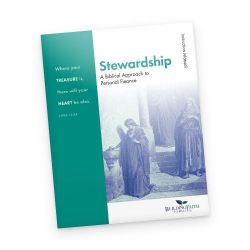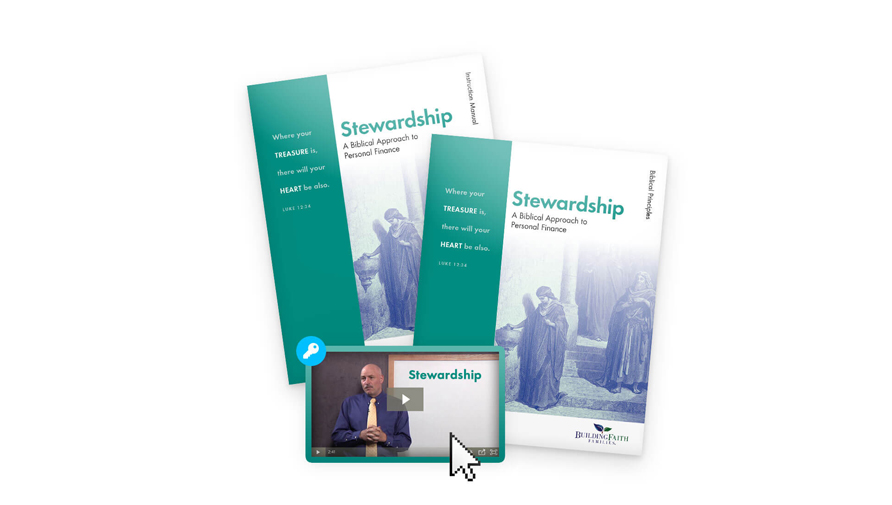After six months of writing and filming (and four months of editing and proofing), the 2nd Edition of the Stewardship Curriculum has been released.
Testimonials from Families who Assisted in the 2nd Edition
Several families had their children be a part of the live audience for the video instruction, and also helped us proof the written text. Here are some thoughts from a few of the parents:
The Stewardship curriculum provides solid, practical lessons that gave my student a strong start to real-world financial decision-making. The worksheets challenged my student to think through real-life situations that she will face coming into adulthood. The Biblical Foundation and Discipleship portion frame the study and clearly show Mr. Demme's heart for helping parents build lives of consequence. Our family highly recommends adding Stewardship to your homeschool plan! - S. Cooper
Throughout our study of Stewardship, we were constantly amazed at how relevant the topics were to issues in our daily lives. It seemed as though we would learn about a topic just as our family encountered it. This has been a great experience, and I recommend Stewardship to any young person as preparation for handling God given resources in a God honoring way! - C. Peters
“Mr Demme helps students transform the way they think about money by providing a biblical methodology and mindset for managing personal finances in the MUS Stewardship Curriculum. While discussing working, spending, saving, giving, debt, business ownership, contentment and so much more; my kids have learned how to apply godly character qualities and biblical principles in their own financial stewardship journey. They are better prepared for life and godliness because of this program!” - B. Ross"
How Many Credits?
In addition to the abundance of Bible teaching in the 2nd edition of Stewardship, I am also encouraging students to read through the New Testament, one chapter a day, following a schedule, while they work through the 36 lessons in the curriculum. Parents who have seen Stewardship at curriculum fairs this summer think it should be worth two credits, one for personal finance portion and one credit for Bible. This will be a state by state consideration, but there is a lot of Scripture in this course.
The Content of the 2019 2nd Edition of Stewardship
There are three books that comprise the written material; the Instruction Manual, Biblical Studies, and Student Workbook. The video instruction may be viewed or downloaded via the Internet.

Instruction Manual
This book is where you will find teaching, several examples of the new materials, and the answer keys for all 36 lessons. Study this book and watch the video instruction to learn the content of each lesson.
The first three units are on making money, banking, and spending money. These lessons are followed by the difference between wholesale and retail prices, comparison shopping and the cost of operating a car.
As I wrote this book, I assumed that students would have some knowledge of algebra, and would be between fifteen and seventeen years old. This age group is thinking about buying a car and getting a job, which is why the course begins with these units.
The next section is about discovering the cost of renting a home, as well as buying and owning a home. After that, we have a couple of what I call “lifestyle chapters.” This is not only taking good care of your body—which I call “temple maintenance and exercise”—but also counting calories and purchasing insurance.
The next portion of the book is about post-high school alternatives to education. I'm hoping that students will not choose to borrow lots of money when they graduate from high school (and then be in debt for the next ten or twenty years of their life). In these sections, we discuss the pluses and minuses of a gap year, how to apply for a job, and how to be an entrepreneur and start your own business. This is followed by two chapters on compound interest and investing.
The last section expands the idea that our treasure encompasses more than personal finance, but includes your time, your energy, and using the gifts that God has given you to extend his kingdom. One chapter is about charity, another about fulfilling the great commission, and the last one is about working with people who are disabled. I have a son with special needs, who has Down syndrome. All of these chapters are from the perspective of providing a “hand up” instead of giving a handout. It is my hope that we will not create a state of dependency by well-intentioned giving, but that we will do better by helping people stand and grow infusing their own gifts, talents, and God given initiative.
Download the Table of Contents.
Biblical Studies
This book has two sections: one on Biblical Principles to govern our treasure, and the other on Scripture Studies to instruct our heart. As stated earlier, Jesus says in Luke 12:34, “Where your treasure is, there will your heart be.” My objective in pulling these studies together is to impact our heart and our treasure (money, time, gifts, talents, and energy) with the eternal Word of God.
Some samples of the treasure topics are: serving God or Mammon, debt, getting rich quickly, and principles of purchasing. The Scripture Studies teach about seeking first the kingdom, being rooted and grounded in God's love, and the importance of reading the Bible. We have a choice, and it's ultimately up to the students, but I encourage each student to read their New Testament a chapter a day, beginning in September and continuing through the middle of May.
Download the Table of Contents.

Student Workbook
After you've watched the video portion and read the Instruction Manual (along with the two Biblical Studies portions), then you are ready to being work in the Student Workbook. Each of the 36 lessons has five worksheets per lesson, for a total of 180 student worksheets. Each worksheet has ten questions. Numbers one through seven are taken from the math involved in personal finance, questions eight and nine are from the Biblical Studies, and number ten is a discussion question to facilitate interaction between students and their parents and grandparents.
Shirts and Ties
For those of you that have used Math-U-See in the past and have watched me progress from a little bit of hair to no hair, from a mustache to no mustache: you are keenly aware that I wore mostly light blue shirts with red ties in the videos. In these new videos, the students who were a part of our filming audience provided input on which color shirt and tie I would wear for each episode. You can look forward to this panoply of different combinations as you watch the video instruction.
